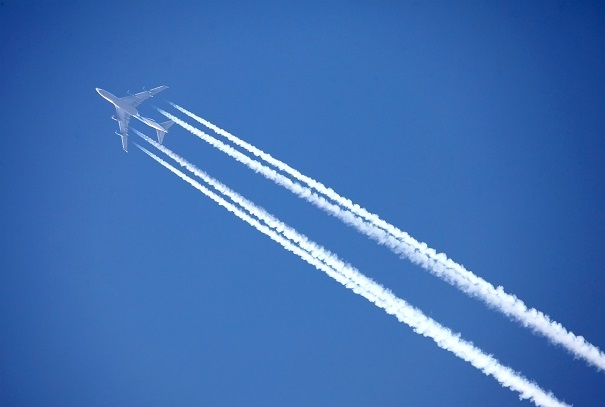
However, deep scars will remain: losses for 2020 and 2021 are expected to top USD170bn. Airline debt as a whole has soared to more than USD650bn as a result of borrowing from governments and the capital markets to stay afloat.
It is going to be a long and difficult road back but that does not mean we have lost sight of another issue that will become another existential crisis - if we do not act on it. That issue is climate change.
In fact, this is an issue that despite COVID-19, never went away. Sustainability is clearly our biggest challenge and the metric on which our industry will be judged for decades to come.
Passengers are already questioning their flying habits as they worry about climate change. We ignore them at our peril.
Aviation contributes about 2% of global CO2 emissions, considerably less than road transport (11.9%) and on a par with shipping. However, even though it may seem modest now, our emissions are likely to grow relative to other industries like ground transport that are steadily decarbonising through electric vehicles. Airlines know this and understand they have to act.
What you probably have not noticed hidden under the avalanche of COVID-related aviation stories is the steady drumbeat of airlines committing to increasingly aggressive climate targets.
As an industry, we are committed to a 50% reduction in CO2 emissions relative to 2005 levels, by 2050. That effectively means cutting emissions from 915 million tonnes in pre-COVID 2019, to 325 million tonnes.
However, many airlines have moved well beyond that. More than 40, carrying about 40% of international passengers, have pledged net zero emissions by 2050 or earlier. In addition, most revealingly, the majority of those airlines made their commitment during the pandemic.
Emissions per passenger have already fallen by well over half in the past 30 years as aircraft and engine design improved fuel efficiency but that can only take us so far. To truly change our emissions profile we must incorporate new technology free of fossil-based fuels.
It is an enormous challenge but it is achievable. The cross-industry Air Transport Action Group, of which I am executive director, has mapped out three potential pathways to a zero-emissions future using electric and hydrogen powered flight, and Sustainable Aviation Fuel (SAF).
Development of hydrogen and electric powered flight is progressing fast via both start-ups and big manufacturers. Airbus as unveiled its ZEROe strategy, which includes hydrogen flight, while smaller operators like ZeroAvia are already flying small hydrogen powered aircraft.
The inescapable fact is that SAF is the best solution in the short-to medium-term to get us to our climate change goals. The technology exists, it cuts life-cycle emissions by up to 80% and it has been used in more than 350,000 flights so far.
It is a drop-in fuel which is blended to a maximum ratio of 50-50 with regular jet kerosene, and produced from feedstock that is strictly regulated to ensure it does not compete with food crops, precious water resources or is responsible for forest degradation.
Because SAF can be dropped into existing aircraft, it can be used on the most CO2- intensive sector of flying - long haul. We estimate long-haul flights account for three-quarters of all CO2 emissions from aviation.
Emissions-free hydrogen and electric powered flight are expected to be in use by the middle of next decade but will be restricted to commuter and short haul flying. It will be several more decades before they will replace fuels like SAF.
Nevertheless, there are significant obstacles, the biggest of which is price. SAF costs about three times as much as regular jet kerosene because production is limited. It accounted for less than 0.1% of total fuel consumed in 2019.
Ramping up production over the next 10 years is critical but aviation cannot do it on its own. It needs policy support from governments and buy-in from Big Oil. The good news is that government policy is becoming more supportive, particularly in the US with the proposed by SAF tax credits, in the UK through the Jet Zero Council, and the EU’s ReFuelEU proposal.
ReFuelEU is likely to include a mandate for airlines to use a blend of SAF in all flights, most likely starting at 2% and rising steadily to reach Europe’s 2050 net zero goals. If it is introduced correctly, it will provide a vital demand signal for SAF producers.
However, there is a potential concern - that the EU could overreach by applying the mandate to all airlines flying in and out of Europe, rather than just to intra-EU flights.
It may sound counter-productive for an industry that believes a global solution is the best way forward for a global problem like emissions, but imposing a blanket mandate on all flights to the EU runs the risk of a political backlash (we have seen it before when Europe attempted to impose a blanket Emissions Trading Scheme on all flights in 2011) as well as competitive distortion.
If the mandate can be successfully introduced in Europe, though, it could be a blueprint for a global SAF framework in the not too distant future. Widespread use of SAF globally at a competitive price to regular kerosene is the goal we seek.
Despite the crushing blow of COVID-19 on our industry, momentum has been building for cleaner skies.
IATA is currently discussing a more stringent emissions target, and the industry’s key regulator, the International Civil Aviation Organisation (ICAO) is expected to deliver its own long-term target when it meets in September next year.
Aviation has a well-deserved reputation for innovation. In 2009, we became the first global industry to unveil an emissions reduction plan. That was the first step. We know there is more to do.
Michael Gill
International Air Transport Association (IATA)



